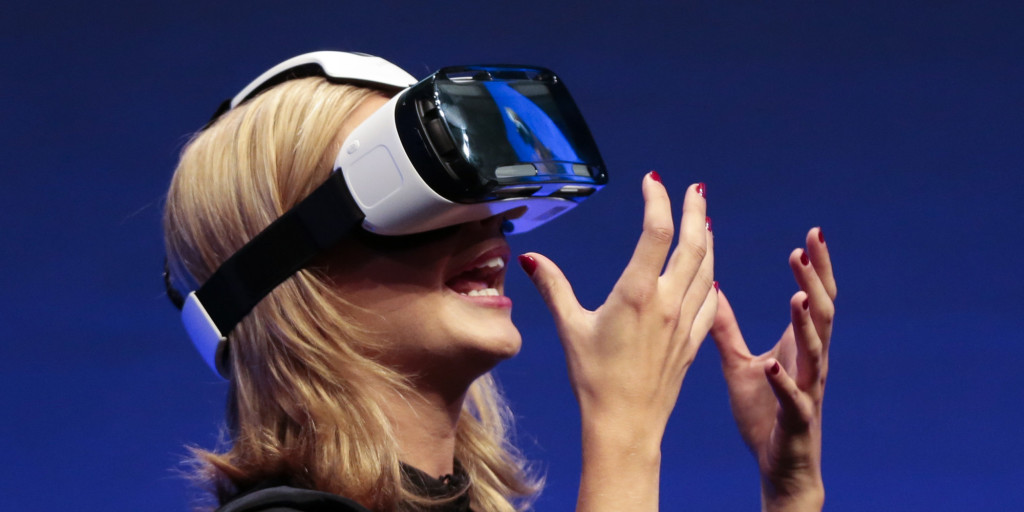While virtual reality is still one of today’s hottest tech trends, a new study indicates that its rise may have hit a slight bump.
SuperData Research has released a new report, which provides a revised forecast on virtual reality revenue for 2016. The numbers have dropped a little bit from earlier estimates, going down 22 percent to $2.9 billion in combined sales for hardware and software.
The company made these revisions based on new data, including how device shipments have not met demand (both Oculus Rift and HTC Vive have a months-long backlog of orders to fulfill), and how a huge portion of the market is still unaware of virtual reality technology.
That said, the report is still optimistic that VR will still meet previous sales forecasts, which is set to reach $22.86 billion by 2019, and then doubling to $40.24 billion by 2020. Hardware is also expected to slightly increase over the next few years, from just under $5 billion in 2016 all the way to just over $15 billion in five years’ time.
“The general public are mostly unaware of Virtual Reality with 50 percent of Americans showing no interest in or knowledge of VR,” says Stephanie Llamas, director of research and head of VR/AR strategy at SuperData. “Broad consumer adoption relies on building awareness, but today nearly 80 percent of consumers only occasionally or never hear about VR.”
Following that, Llamas, speaking with [a]listdaily, said, “If someone hasn’t had a positive experience with VR they are more likely to dismiss news about it. The only way to understand VR is by experiencing it so driving awareness is going to require enticing people to try it first hand as much as possible.”
Llamas also noted that early adopters play a big part in the success of these units, as they’re likely to share with friends and family, as well as posting their impressions across social media. But, again, production has been an issue with these companies, with more than 13 million Americans saying they intend to purchase some form of virtual reality headset, but only 7.2 million are ready to ship.
Regarding the hardware shipping delays, Llamas noted, “It is not going to have a long-term impact, but it will cause a bottleneck early on. Enough major players have thrown their weight behind it that there is no reason it won’t skyrocket—just a little later.”
Meanwhile, some companies are benefitting from promotions surrounding VR. For instance, Samsung provided a free Gear VR headset to those that pre-ordered its Galaxy S7 and S7 Edge devices, bringing a total of 3.5 million VR devices shipping to consumers. It too is hitting its fair share of delays, but that won’t stop it from keeping the lead, according to Llamas. “Samsung will have the largest share of the market until another mobile device beats them out, but mobile devices will always have the widest adoption.
“Samsung’s devices are on back order for the next couple months so it’s not that they haven’t thrown enough weight behind it, it’s that it worked too well and they can’t meet the demand. The mobile device is also still very much a novelty. What’s most promising about VR is how much you can do with high-end devices. It’s fun to get a taste of that with a mobile device, but it will take time before a smartphone can power a VR device the way it needs to be.”
Sony also has a say in the VR race, with projections that its PlayStation VR headset will ship 2.6 million units when it ships in October. That’s a larger number than the 1.1 million combined units that both Oculus and HTC will sell, although there’s some question as to whether PS4 hardware will be ready for the hardware. There have been rumors that the company is looking into releasing an upgraded model that will be more “VR ready,” but nothing has been confirmed yet. That said, Llamas was quick to point out how it would be a hit with kids. “Yes, it [PlayStation VR] is already the most well-known headset among Americans. It will be a major device around the holidays and new year when parents are willing to spend $400 on a gift and adults get their bonuses,” she said.
The Google Cardboard offers a simple alternative to virtual reality, but Llamas doesn’t think it counts. “Google Cardboards don’t convert people into VR fans; they just give someone a new but fleeting experience. And because mobile is still a novelty, people use it knowing it’s still the on the lower end of experiences.”
Other findings in the report are as follows:
- Just 28 percent of Americans have heard of PlayStation VR versus 22 percent for Oculus Rift, 21 percent for Samsung Gear VR and just 5 percent for the HTC Vive
- Gamers will be key to initial consumer adoption, accounting for 78 percent of sales in 2016, however, by 2020, gaming will fall to 28 percent of overall spend
- 26 percent of VR-aware consumers say headsets are too expensive, providing a significant barrier to adoption
- Mobile adoption of VR is expected to be slower than initial estimates due to the lack of premium headsets for non-Samsung smartphones, with majority of growth coming in 2018 and beyond, and a projected year over year gain of 175 percent
- By 2020, nearly 41 percent of sales from VR headsets, software and peripherals will be driven by PC usage
So, it appears that virtual reality will still make a big splash this year, but probably won’t take off in the consumer market until both supply and promotion pick up.

